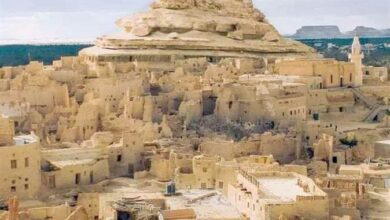In recent weeks there have been numerous reports of the government allocating millions of pounds for the development of slums. These were also coupled with news of Saudi funding for similar projects. No details have been provided yet about how these projects will be carried out, under whose supervision and with what level of community participation.
Such headlines about millions of pounds being allocated to housing projects made occasional appearances under Mubarak’s regime to present an image of a state taking care of business. However, the results were generally substandard; housing problems persist and many of the state’s projects remain vacant for reasons ranging from a lack of transport and nearby work opportunities to the absence of working utilities to corruption.
Egypt’s housing problem is not caused by a shortage of funds, but rather a host of other reasons, such as a lack of adequate standards and community engagement, that the state has long ignored. It would be a calamity to continue with the same failed policies of the past that serve the interests of private contractors and international investors rather than local communities. At this moment, when so much international aid will be allocated for housing development (albeit with hidden conditions attached), it’s critical that we take a fresh look at how such projects are undertaken.
Before breaking ground on any new projects there needs to be a meeting of local professionals, international agencies, politicians, urban planners and community representatives to draft a document that will define a new relationship between government and local residents and outline the standards, priorities, responsibilities of each side. This would not be anything unusual. In postwar Europe, the Marshall Plan lead to entire studies on the rebuilding of major cities, offering solutions for the housing crisis using new architectural and urban planning standards.
After decades of corruption and disrespect for building codes and with an industry still dominated by amateurs (from the handyman at the building site to politicians that sign building contracts), it will be difficult to put Egypt’s architectural and urban planning raise standards immediately. Visit any construction site and you will see day laborers with no real training and managers that don’t follow any rules. Moreover, many projects that are still under construction do not take into account the maintenance needs of buildings once they are complete.
With so much emphasis on “building Egypt” in the media (from talk shows to advertisements for mobile services and soft drinks) and with so much international funding available for new housing projects, there’s a real opportunity to revamp Egypt’s construction industry and housing policies. National-level building standards should be put in place that respect local contexts rather than reinforce Gulf-influenced ornamental extravagance or the failed vernacular models of Hassan Fathy. After that, training camps may be set up to provide thousands of young men and women with the needed construction skills.
Finally, housing development will never succeed without a strong municipal government. In Egypt, housing projects often become reduced to constructing discrete buildings with no focus on the spaces between them: the sidewalks, parks and public squares. Managing these spaces is the job of a municipality, without which streets remain unpaved, sidewalks non-existent, trash uncollected and communities have no agency through which to participate in local governance.
Will developing slums and building new housing communities translate into paved streets, parking lots, and public spaces for residents to socialize, children to play and couples to go on a date? Will basic utilities and waste management be provided? Will the government regulate street patterns and building heights to allow light and air to penetrate every residence? Will new development plans provide communities with basic facilities such as a post office, schools and day cares as well work opportunities so that residents don’t have to travel across the city to make a living? Most importantly, will communities have a say in developing the areas where they live?
All these goals are possible. It’s time to bust the myth that good urban design costs more. With the same resources, Egyptians can produce well-designed community spaces that respond to basic human needs. But politicians and investors will have to make a greater effort to respect the needs of people rather than treat these projects as new items to add to their portfolios. That would be revolutionary.
Mohamed Elshahed is a doctoral candidate in the Middle East and Islamic Studies Department at New York University. He blogs at CairObserver.




